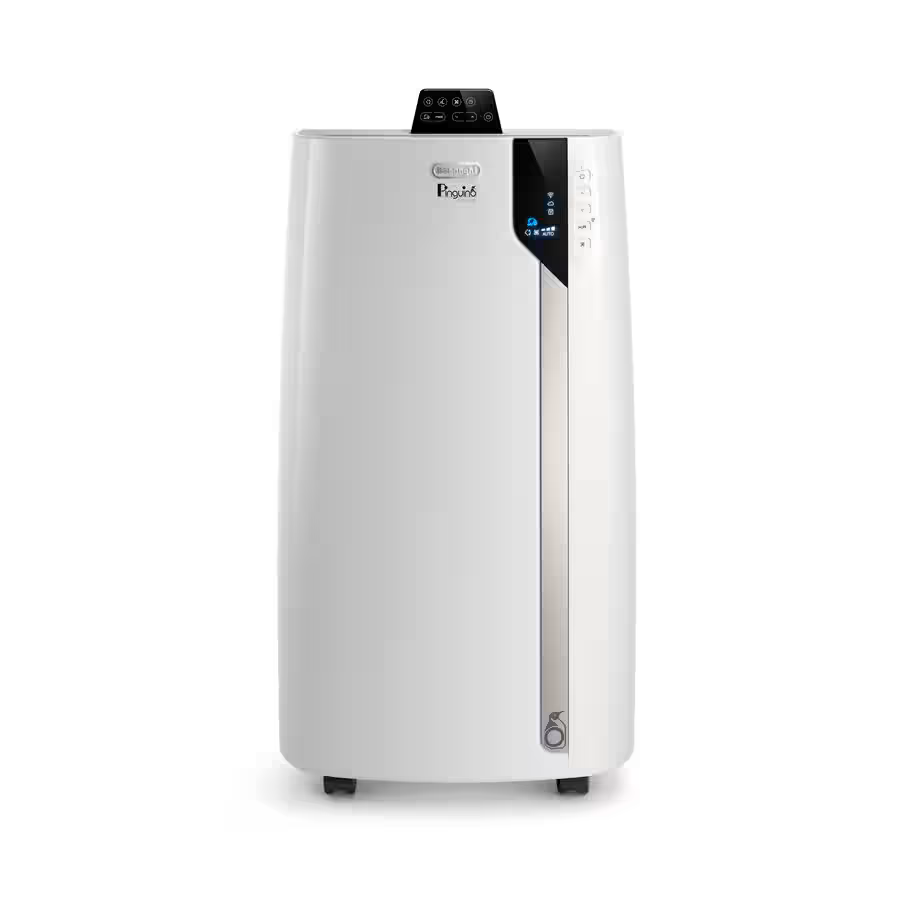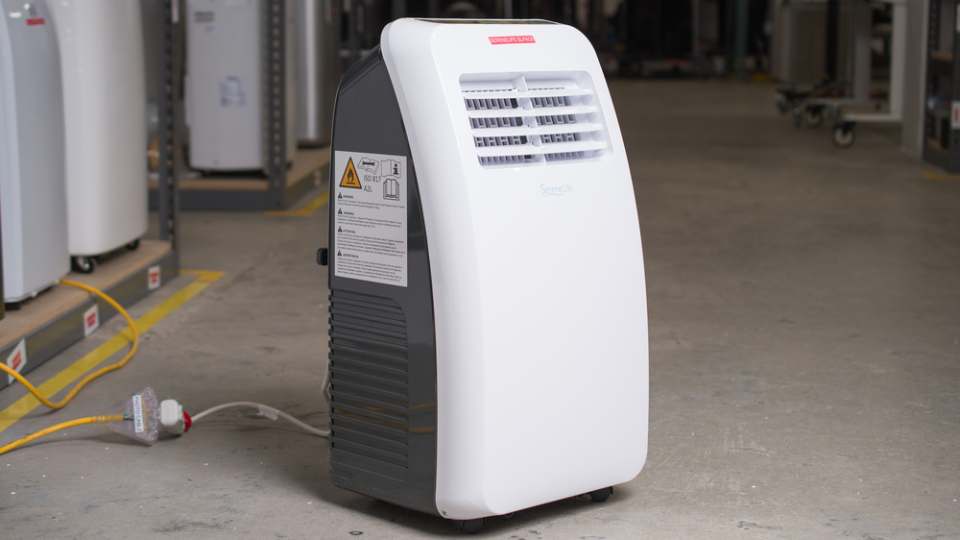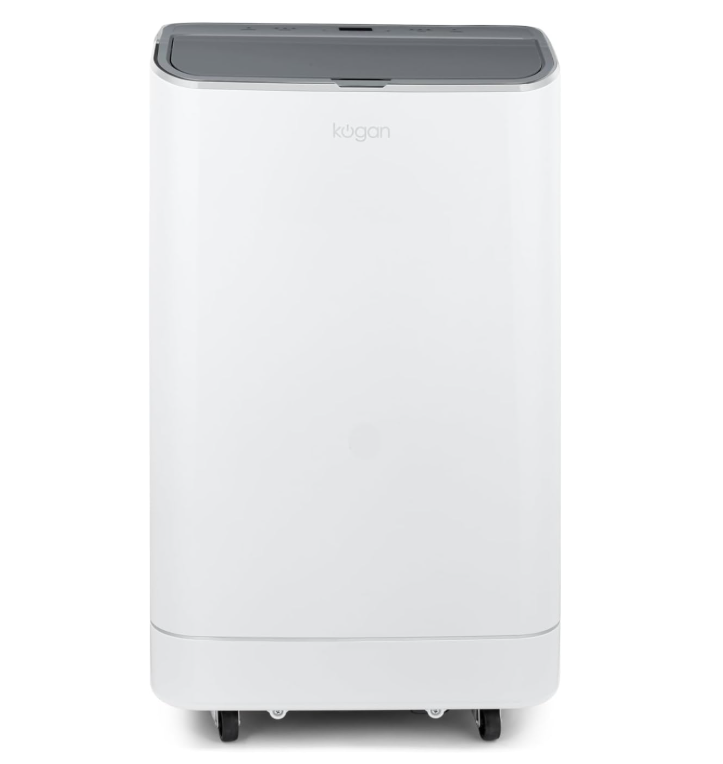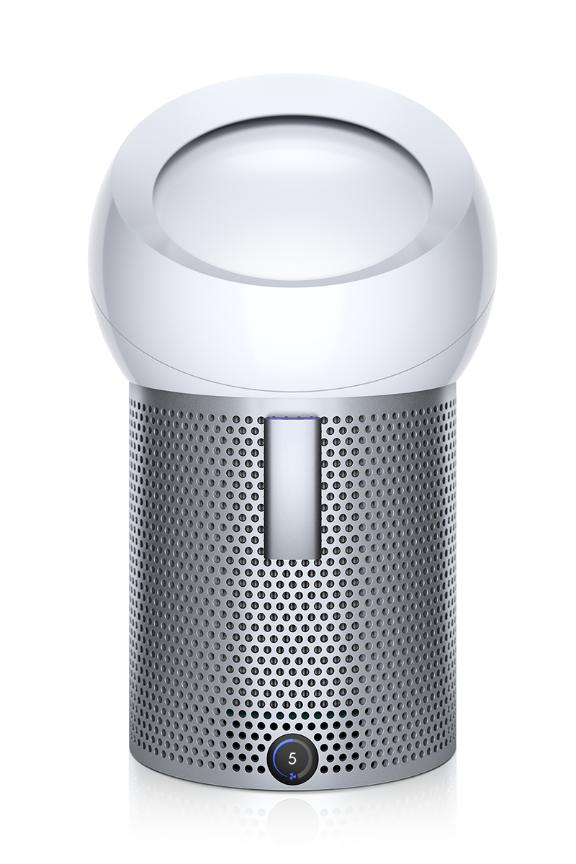Best Portable Room Air Conditioners in Australia 2026: Complete Guide
With summer temperatures climbing higher each year, keeping cool at home is essential. For those unable to install a fixed system, a portable air conditioner offers a practical and affordable solution. These units deliver quick cooling, move easily between rooms, and modern designs now provide stronger performance, lower energy use, and quieter operation.
To help you find the right fit, we’ve selected the best portable room air conditioners in Australia for 2025, ranging from powerful all-rounders to compact models perfect for smaller spaces. Scroll down and find more!
Best in Room Portable Air Conditioners in Australia
When choose portable air conditioner for home, focus on cooling power, portability, efficiency, and value. Here are five of Australia’s best portable room air conditioners for 2026, tailored to different spaces and needs.
1. Best Overall – EcoFlow WAVE 3 Portable Air Conditioner
The EcoFlow WAVE 3 Portable Air Conditioner is one of the most versatile portable air conditioners available. With rapid cooling, smart app controls, and eco-friendly refrigerant, it’s designed for year-round comfort. Its rechargeable battery (sold separately) allows up to 8 hours of cordless operation, making it suitable not only for homes and offices but also RVs and off-grid setups.
Additional features like automatic dehumidification, multiple operating modes, and whisper-quiet performance (as low as 44 dB) make it a top choice for bedrooms, living rooms, and workspaces. Lightweight and compact, it’s easy to move and store, offering a rare balance of performance, portability, and flexibility.
Ecoflow Wave 3 Portable Air Conditioner
2. Best Portable Air Conditioner for Small Room – De’Longhi PAC EX130CST WiFi
The De’Longhi PAC EX130CST WiFi is built for smaller spaces such as apartments, bedrooms, or home offices. With a 3.3kW cooling capacity, it delivers strong performance in compact areas without consuming excess power. Its WiFi connectivity allows full remote control through a smartphone app, letting users adjust temperature, fan speed, or timer settings with ease. The sleek design and quiet operation make it a convenient choice for everyday home cooling.


3. Best Entry-Level Choice for Small Rooms – SereneLife SLPAC8
The SereneLife SLPAC8 is a compact, budget-friendly portable AC ideal for small rooms up to 215 ft² (20 m²). With 4,000 BTU cooling capacity and three operating modes—cooling, dehumidifying, and fan—it provides simple, efficient comfort. Its single-hose design and included remote make operation easy, though it lacks Wi-Fi or smart home integration. Perfect for bedrooms, offices, or studio apartments on a budget.


4. Best Portable Air Conditioner for Big Room – Kogan SmarterHome™ 3.5kW
If you’re after affordability without sacrificing features, the Kogan SmarterHome™ 3.5kW is a practical option for small to medium-sized rooms. With 3.5kW of cooling capacity, it comfortably handles living rooms or larger bedrooms. Smart home integration makes it easy to connect with Google Assistant or Alexa, while its simple installation and user-friendly controls ensure a hassle-free experience. For households on a budget, this model offers a strong mix of performance and value.


5. Quietest Model for Bedrooms – Dyson Pure Cool Me Personal Air Purifier Fan
The Dyson Pure Cool Me isn’t a traditional air conditioner, but for those who prioritize quiet operation in the bedroom, it’s a unique alternative. Combining personal cooling with advanced HEPA air purification, it ensures a steady flow of cool, clean air while removing allergens and pollutants. Its compact size and ultra-quiet design make it ideal for light sleepers or anyone needing a gentle cooling solution overnight.


What to Look for When Choosing a Portable Room Air Conditioner?
Choosing a portable room air conditioner should keep both comfort and practicality in mind. Cooling capacity, noise level, and energy use all play a part. Let’s take a closer look at what matters.
1. Cooling Capacity and Room Size
The cooling output of a portable room air conditioner is rated in BTUs or SACC. Choosing the right size is crucial—an undersized unit won’t keep up on hot days, while an oversized one will cycle on and off, wasting energy. As a guide,
5,000–7,000 BTU: small bedrooms or offices (up to 200 sq. ft.)
8,000–10,000 BTU: medium rooms (250–400 sq. ft.)
12,000+ BTU: large living rooms or open spaces
2. Energy Efficiency and Running Costs
As portable air conditioners use electricity, in Australia’s hot summers, running costs can add up quickly. That’s why the Energy Efficiency Ratio (EER) is worth checking before you buy.
EER 10 or higher: Lower electricity use and better long-term savings.
EER 8–9: Less efficient, often cheaper upfront but costlier to run.
Tip: A 10,000 BTU unit with EER 10 will use around 1,000W, while the same size at EER 8 needs 1,250W—about 25% more power.
3. Noise Levels and Comfort
Noise levels matter more than most people think. Portable units typically range between 44–60 dB, with quieter models often advertised as “sleep-friendly.” Anything under 50 dB is generally suitable for bedrooms or studies, while louder units may be acceptable in lounges or open spaces. If you’re a light sleeper, look for models with a sleep mode or adjustable fan speeds to reduce background noise at night.
4. Portability and Setup
Not all portable ACs are equally portable. Some weigh over 80lbs and are awkward to move, while lighter models under 60lbs with caster wheels glide easily between rooms. Most come with a window kit for venting, which should be simple to install and remove, important for renters or people who move often. Check both the weight and the exhaust system to make sure it suits your space.
5. Extra Features and Maintenance
A few added features can make ownership easier and extend the unit’s life:
Self-evaporating systems reduce the hassle of draining water tanks.
Washable filters improve air quality and cut down on replacement costs.
Smart app controls let you adjust temperature and timers remotely, perfect for pre-cooling a room.
Dehumidifier mode helps in humid climates, reducing moisture and mould risk.
Maintenance Tips to Keep Your Portable AC Running Smoothly
To ensure your portable air conditioner operates efficiently and long-term, regular maintenance is crucial. Here are a few simple but effective maintenance tips:
Clean the filter regularly: Air conditioner filters easily accumulate dust and debris, which can affect cooling performance. It’s recommended to remove the filter every two weeks, rinse it with warm water. And let it dry before installing it to maintain good air circulation.
Drainage and dehumidification: Portable air conditioners produce condensation during cooling. It’s important to drain any accumulated water from the water tank promptly to prevent overflow and possible malfunction. Some models have automatic drain features; ensure the drain hose is clear during use.
Check the exhaust duct: The exhaust duct is the passage for hot air to be discharged. Ensure it is free of folds, blockages, or leaks to avoid affecting cooling efficiency. Also, keep the exhaust duct as short and straight as possible during installation to reduce energy consumption.
Maintain proper ventilation: Ensure ample space around the air conditioner to avoid obstructing the air inlet and outlet. This ensures smooth air flow, improving cooling performance and the lifespan of the unit.
Power check after maintenance. When you test the unit after cleaning, be mindful of electrical load; if you’re running it off-grid for checks, use a compatible power station to avoid tripping home circuits.
Seasonal storage: When not in use, it’s recommended to thoroughly clean the unit and store it in a dry, ventilated area. If necessary, use a dust cover to protect the internal components from dust and moisture.
Ecoflow Wave 3 Portable Air Conditioner
Conclusion
Selecting the best portable room air conditioner means focusing on the features that truly matter: cooling power matched to your space, energy efficiency to control running costs, and noise levels for everyday comfort. Extra functions like smart controls, dehumidification, and easy portability make these units even more practical for Australian households.
With plenty of reliable options in 2026, it’s easy to find a model suited for small bedrooms, large living rooms, or even off-grid use. For innovation and flexibility, the EcoFlow Wave Portable Air Conditioner stands out. Ready to upgrade your comfort? Find the model that suits you best today.
*The brands referenced in this article are provided for informational purposes only and do not indicate any partnership with EcoFlow.
FAQs
Which portable air conditioner is best in Australia?
The best portable air conditioner in Australia depends on your space, budget, and cooling needs, but in 2025, several models stand out for performance and efficiency. For small bedrooms or apartments, compact units with 5,000–7,000 BTU are ideal, while larger spaces need 10,000+ BTU options.
Energy efficiency and noise control are also key factors to consider. Among top contenders, the EcoFlow Wave Portable Air Conditioner is highly rated for its portability, smart controls, and ability to run off-grid with optional battery power.
Are portable room air conditioners any good?
Absolutely. Portable air conditioners excel in flexibility and convenience. They’re particularly useful for rentals, temporary cooling needs, or situations where a fixed air conditioner isn’t feasible. While not as powerful as fixed AC units, they provide convenient, easy-to-install cooling for small to medium rooms. Their portability and quick setup make them a practical choice for many homes and situations.
How much does it cost to run an air conditioner for 3 hours?
Typical portable air conditioners draw roughly 0.7–1.5 kW (700–1,500 W), so running one for 3 hours uses about 2.1–4.5 kWh. Using a mid-range example of 1.2 kW, 3 hours = 3.6 kWh; at a typical Australian residential rate (roughly A$0.25–0.45/kWh) that costs about A$0.90–A$1.62 — using A$0.30/kWh as a simple benchmark, it’s ≈ A$1.08 for three hours.
Exact cost depends on your unit’s wattage, how hard it runs (compressor duty cycle) and your tariff, so check the appliance power rating and your electricity price for a precise figure.